How can a Texture Analyser give you a competitive edge in new product development?
Texture Analyser User News – Stable Micro Systems – June 2023
IN THIS EDITION:
The use of texture analysis in developing new materials for wearable technologies | Testing in our lab: Comparing paper straws | Lipsticks: Formulation, Production & Characterisation – A Review | How to use a Texture Analyser to beat your competitors
Measure a wide array of textural qualities with a Texture Analyser
If you are aiming to develop a new product or enhance an existing one, leveraging the insights derived from a Texture Analyser can provide you with invaluable information that gives you an opportunity to develop a significant competitive advantage. By using a Texture Analyser, you can precisely and objectively measure a wide array of textural qualities, including hardness, brittleness, adhesiveness, tensile strength, and extensibility across various product types. Manufacturers who effectively utilise this technology can differentiate their products in the market and cultivate a loyal consumer base.
In this article, we will explore how harnessing the potential of a Texture Analyser empowers food manufacturers to surpass their competitors by optimising the texture of their products to align with specific consumer preferences. Furthermore, once the desired texture is achieved, manufacturers can ensure consistent quality throughout the entire manufacturing process. While we are looking specifically at food manufacturing in this article, differentiating products by leveraging the power of texture analysis is not limited to this and has been employed successfully in the development of cosmetics and skincare, pharmaceuticals, materials and adhesives, and powder flow.
Leveraging a Texture Analyser for product differentiation
Understand consumer preferences: Utilise a Texture Analyser to measure the textural properties of rival products and identify the specific attributes that consumers favour. By comprehending consumer preferences, manufacturers can fine-tune their products to align with these preferences, gaining an edge over competitors. For instance, the creator of a gluten-free variant of a Madeira cake would be delighted to discover that their new development matches the textural expectations of its gluten-loaded counterpart, thereby avoiding consumer disappointment and maintaining brand loyalty.
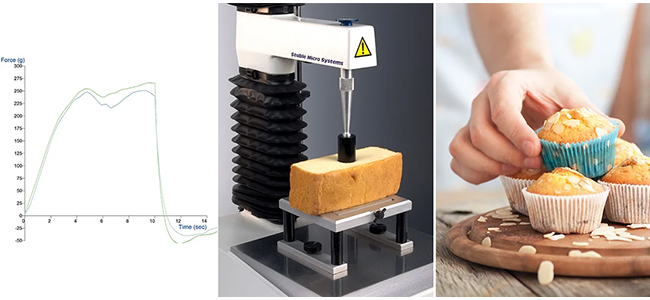
Texture analysis: the comparative result, the typical method, the consumer expectation
Conversely, an alternative meat manufacturer might find that their newly created plant-based burger (see red line) lacks the textural integrity or biting characteristics of real meat product (see blue line), potentially risking product rejection due to an inferior sensory experience.
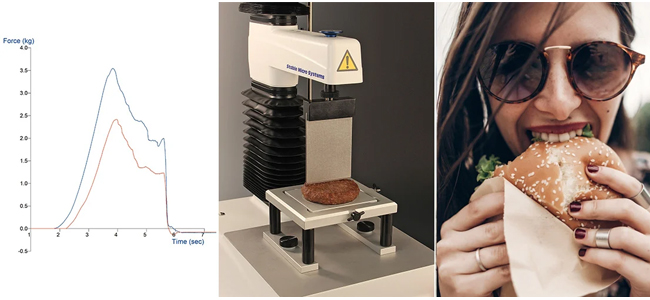
Texture analysis: the comparative result, the typical method, the consumer expectation
Develop innovative textures: Utilise a Texture Analyser to explore and experiment with new and inventive textures that can set your products apart from the competition. By testing different formulations and processing conditions, manufacturers can create unique textures that appeal to consumers and differentiate their products.
Improve consistency: Use a Texture Analyser to establish a “gold standard” for your product’s texture, aiming to achieve it consistently across batches. Setting up pass/fail criteria ensures that each batch meets the desired texture, fostering consumer trust and loyalty. This consistency differentiates your products from competitors who may have more variation in texture.
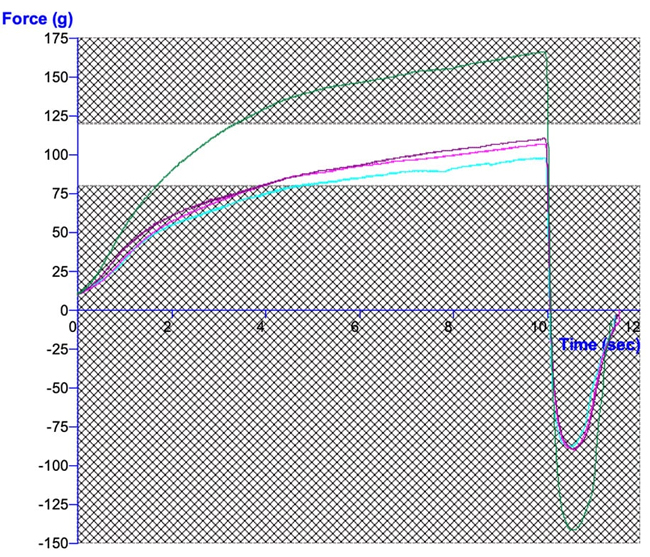
Example results showing 3 graphs falling within the product acceptance band and one falling out
Enhance quality: Leverage a Texture Analyser to identify defects or inconsistencies in your products and take corrective action to improve overall quality. This allows you to differentiate your products from those of competitors that may suffer from quality issues. For example, if your mayonnaise or ketchup product (see blue line) is experiencing difficulties in dispensing from its squeezable tube, analysing the texture of a competitors product that does not have this issue (see red line) can help you identify the target texture and reformulate accordingly.
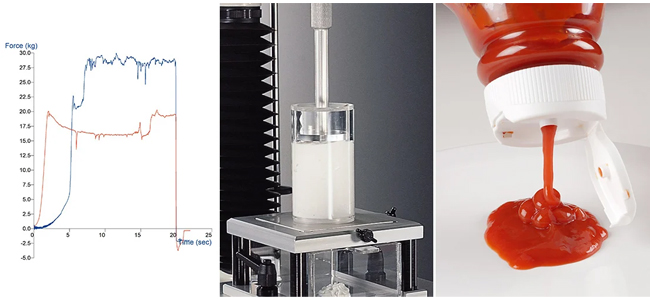
Texture analysis: the comparative result, the typical method, the consumer expectation
Comply with regulations: Utilise a Texture Analyser to ensure your products meet regulatory requirements pertaining to texture, safety, and quality. Compliance builds consumer trust and distinguishes your products from those of competitors who may face compliance issues.
Substantiate product claims: If you wish to make specific claims about your product, such as being “25% more spreadable” or “50% less sticky,” quantifying your products using a Texture Analyser is crucial to substantiating those claims. For example, by measuring the spreadability of Product A compared to Product B, you can assess the improvements in your product reformulation, allowing you to confidently make the desired statement.
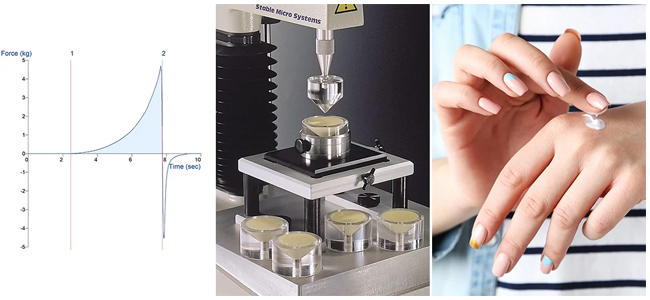
Texture analysis: the comparative result, the typical method, the consumer expectation
Texture Analyser is accurate and objective providing quantification of an enormous range of textural properties. By leveraging the power of texture analysis, manufacturers can differentiate their products and gain a loyal consumer following.
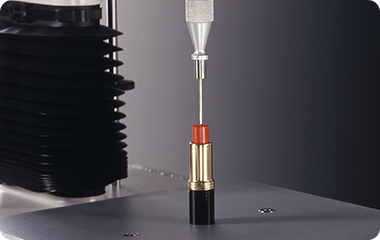
Lipsticks: Formulation, production and characterisation
Learn how a Texture Analyser is applied for this popular cosmetic product. Read more here
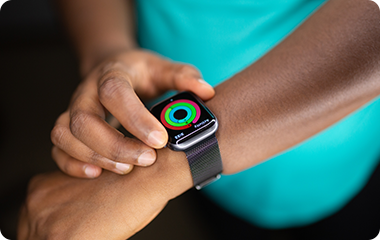
Texture analysis: New materials for wearable technologies
Discover the wide range of ways to test these new products. Read more here
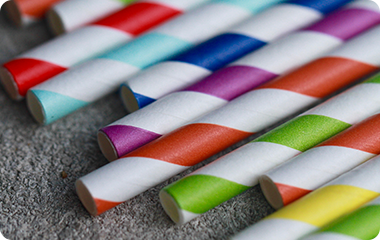
Testing in the lab: Comparing paper straws
Discover how modifying materials changes mechanical properties. Read more here
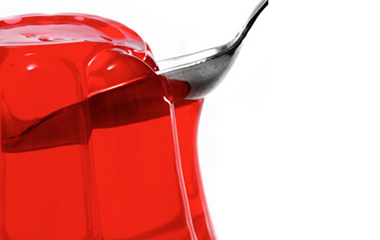
Texture: Measure and analyse properties
Discover the wide range of texture and physical properties that can be measured with a texture analyser. Read more here.
Interested in more information?
If you would like to hear from one of our sales specialists, complete the form below and we will be back to you as soon as possible.
RECENT POST
Introducing the Eppendorf Research® plus 4-Pack with e...
Apr 24, 2024
NewsMettler Toledo Launches New Generation of Laboratory Ba...
Apr 22, 2024
NewsMason Technology is one of Ireland's Best Workplaces&#x...
Apr 18, 2024
NewsWebinar: Thinking outside the mouse: ex-vivo dissection...
Apr 11, 2024
WebinarsUnderstanding Buffers in Liquid Chromatography
Apr 10, 2024
BlogExploring Texture Analysis in advancing Medical Device ...
Mar 26, 2024
BlogFreeze Drying Adviser Vol.2: Illustrated Toolkit for Ge...
Mar 13, 2024
White PapersSolvents Mixing Ratio in Liquid Chromatography
Mar 06, 2024
Blog
